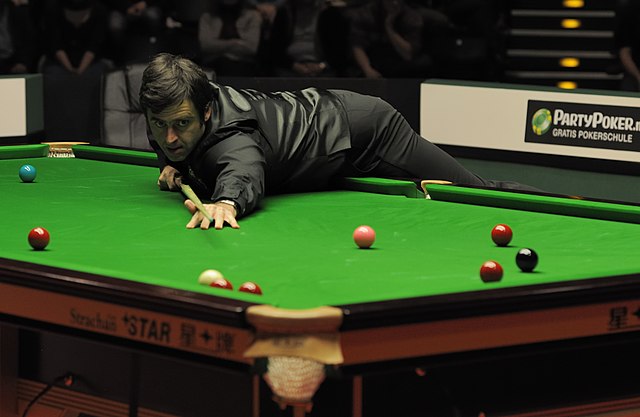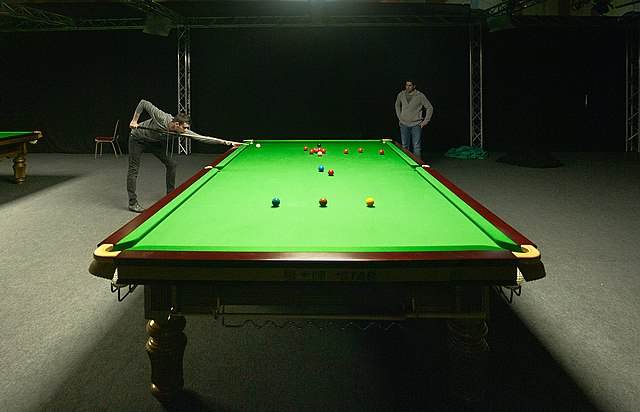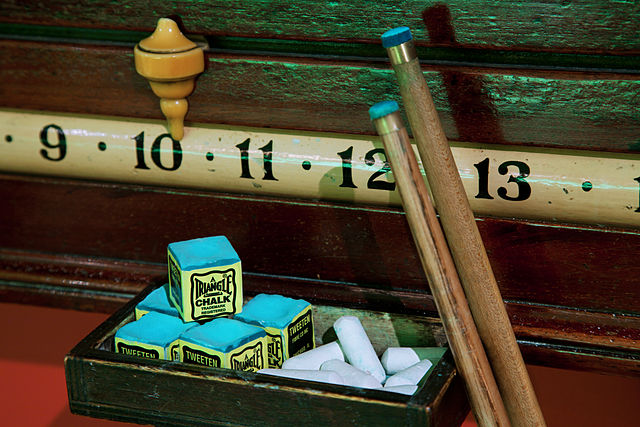In snooker, a century break is a break of 100 points or more, compiled in one visit to the table. A century break requires potting at least 25 consecutive balls, and the ability to score centuries is regarded as a mark of the highest skill in snooker. Ronnie O'Sullivan has described a player's first century break as the "ultimate milestone for any snooker player".
Ronnie O'Sullivan (pictured) has scored the most century breaks in professional snooker tournaments at more than 1,200.
Snooker is a cue sport played on a rectangular billiards table covered with a green cloth called baize, with six pockets, one at each corner and one in the middle of each long side. First played by British Army officers stationed in India in the second half of the 19th century, the game is played with twenty-two balls, comprising a white cue ball, fifteen red balls, and six other balls—a yellow, green, brown, blue, pink, and black—collectively called the colours. Using a cue stick, the individual players or teams take turns to strike the cue ball to pot other balls in a predefined sequence, accumulating points for each successful pot and for each time the opposing player or team commits a foul. An individual frame of snooker is won by the player who has scored the most points. A snooker match ends when a player reaches a predetermined number of frames.
Four-time world champion Mark Selby playing at a practice table during the 2012 Masters tournament
A full-size snooker table set up for the start of a game
A sliding scoreboard, some blocks of cue-tip chalk, white chalk-board chalk, and two cue sticks
A shot using a rest, allowing the player to reach farther down the table





